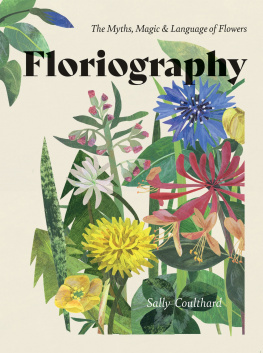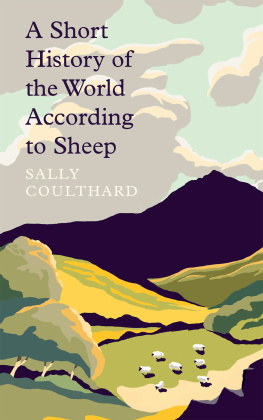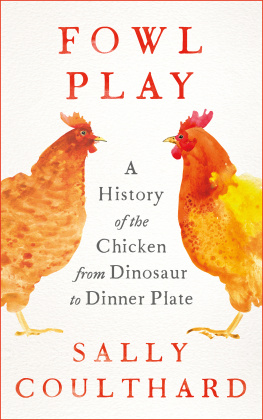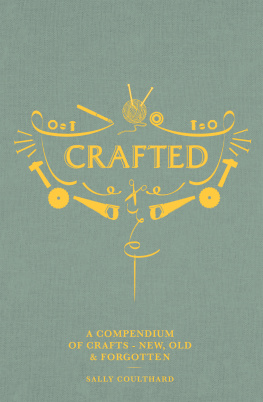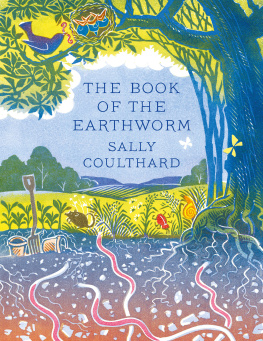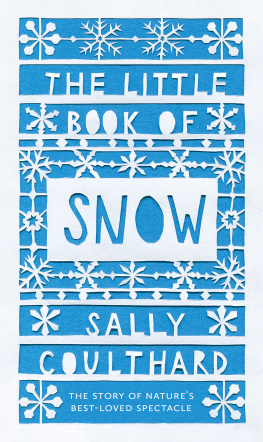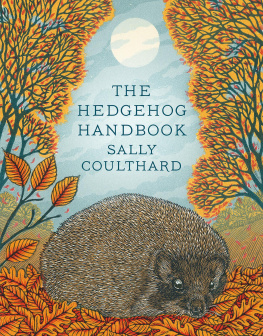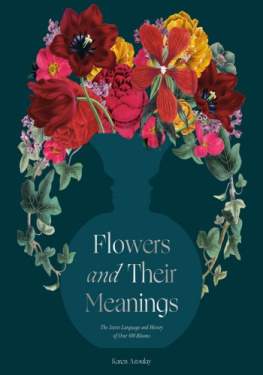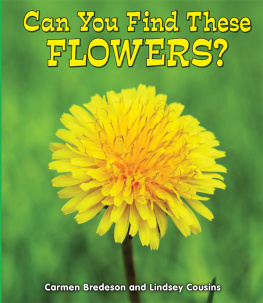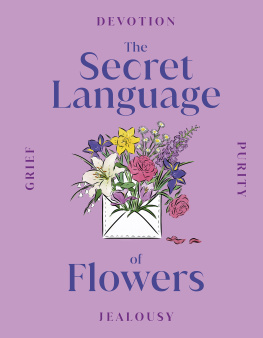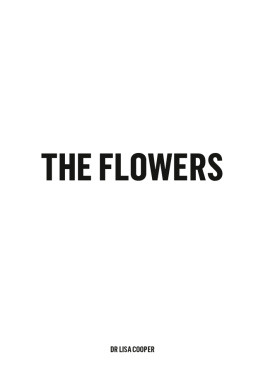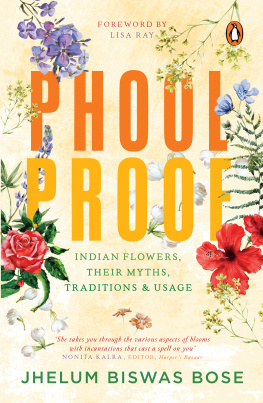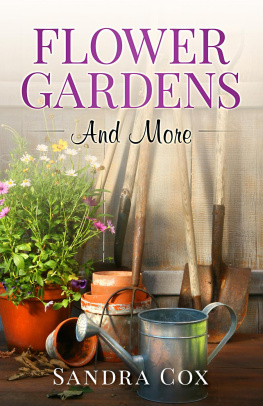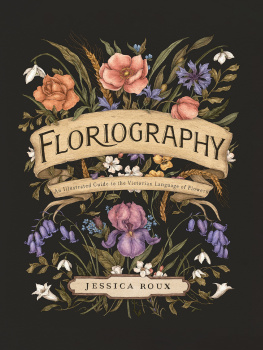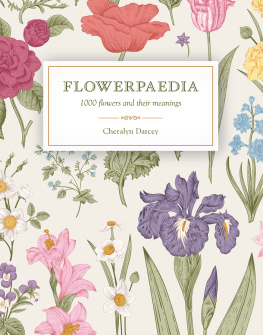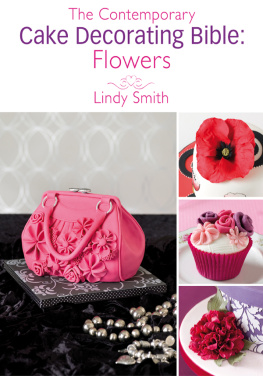
What a pleasure it is to work with such a fantastic bunch of people. Harriet, Stacey, Claire and Clover you are my complete dream team and lovely, lovely women to boot. Making books is a collaborative process Im so lucky to work with individuals who have great editorial judgement, fantastic ideas and an unwaveringly good sense of design. Thank you for making this such a gorgeous book.
Publishing Director Sarah Lavelle
Commissioning Editor Harriet Butt
Editor Stacey Cleworth
Art Director and Designer Claire Rochford
Illustrator Clover Robin
Head of Production Stephen Lang
Production Controller Sinead Hering
Published in 2021 by Quadrille,
an imprint of Hardie Grant Publishing
Quadrille
5254 Southwark Street
London SE1 1UN
quadrille.com
All rights reserved. No part of this publication may be reproduced, stored in a retrieval system or transmitted in any form by any means, electronic, mechanical, photocopying, recording or otherwise, without the prior written permission of the publishers and copyright holders. The moral rights of the author have been asserted.
Cataloguing in Publication Data: a catalogue record for this book is available from the British Library.
Text Sally Coulthard 2021
Illustrations Clover Robin 2021
Design and layout Quadrille 2021
eISBN 978 1 78713 631 1
The English name buttercup probably originates from the idea that these blousy, golden flowers, falsely believed to be grazed by cows, gave milk its creamy colour; Germans traditionally also call them Butterblumen, the Dutch boterbloemen and the Swedes smrblommor. In Ireland, buttercups were a key flower in May Day celebrations by spreading the yellow blooms in and around the house, it was thought witches and bad fairies would be prevented from stealing the milk or butter. Children today still play the time-honoured game of holding a buttercup underneath a playmates chin to see if they like butter.
The Latin name for buttercup, ranunculus, means little frog, from their propensity to grow near water, but regional versions of buttercup are a delight, from baffiners to butterflowers, kings knob to polts. Shakespeare called them cuckoo-buds while in English rural slang they were often referred to as crazies, both of which refer to an ancient folk belief that buttercups caused insanity; Joseph Wrights The English Dialect Dictionary (1898) notes: It would appear that this meadow plant is considered an insane herb by country people for I heard lately that the smell of the flowers was considered to produce madness.
Buttercups are actually toxic to both humans and livestock if eaten. Applied topically, buttercups can also cause blistering, a fact that wasnt lost on early physicians, who relished any opportunity to draw out illness through the skin. Nicholas Culpeper, writing in the mid 1600s, enthused: This fiery and hot-spirited herb of Mars is no way fit to be given inwardly, but an ointment of the leaves or flowers will draw a blister, and may be so fitly applied to the nape of the neck to draw back rheum from the eyes. An 1837 copy of The Lancet even claims that the buttercup is so good at creating skin sores that it has been used by beggars to excite the compassionate assistance of the benevolent, and even the medical man has sometimes been deceived.
Some varieties of buttercup are more toxic than others. The Ranunculus thora was said to have been used by alpine hunters to envenom their arrows. In Sardinia the Ranunculus sardous or hairy buttercup may have given rise to the phrase sardonic grin in pre-Roman times, historical sources suggest that Sardinians executed criminals and elderly people who couldnt take care of themselves; before being beaten to death or pushed off a high rock, the victims would be helped along with an intoxicating buttercup drink that had the unusual side-effect of making their facial muscles contract, forcing them to smile.
When the Elizabethan poet Edmund Spenser wrote the lines: Mine was the Primrose in the lowly shadeOh! That so fair a flower so soon should fade, And through untimely tempest fade away, his audience would have known he was talking about a young woman. The primrose is one of the first flowers of spring and, as such, has long been associated with new beginnings, young love and fresh-faced female sexuality. Chaucer, in The Millers Tale, also describes the attractive, long-legged young wife of the old carpenter as a primerole (primrose), leaving his readers in no doubt of her youthful charms. In Shakespeares A Midsummer Nights Dream (1595), Hermia confides to her friend Helena:
And in the wood where often you and I
Upon faint primrose beds were wont to lie,
Emptying our bosoms of their counsel sweet,
There my Lysander and myself shall meet.
The primrose beds symbolised the intimate friendship of two young women, but also the passion of Hermia meeting her lover, Lysander. The language of the primrose carried through into Victorian times, the flower becoming shorthand for youth and first love.
Primroses, with their spring significance and rich, eggy yellow petals, also attracted folk superstitions about hens. Sympathetic magic or superstitions which are also called imitative beliefs were a kind of magic where things that looked like each other (or corresponded in some way) could affect each other. The primrose, a yellow flower that arrived in springtime, became linked to ideas about eggs and spring chickens. It was unlucky to pick primroses and bring them into the house unless you picked thirteen or more. The idea was the amount of primroses you picked would dictate how many eggs a hen would hatch. Thirteen was a significant number not only was it thought to be the maximum number of eggs a broody hen could sit on and hatch comfortably, but its also traditionally an unlucky number in both Christian and Norse mythology.
Of all the English meadow flowers Chaucer could have chosen from, he picked the daisy as his favourite. In his poem, The Legend of Good Women, he devotes over fifty lines of glowing praise to this tiny field flower; its such a cheerful, unabashed dedication Of all the floures in the mede, Than love I most these, he writes with joy, Whan it up riseth early by the morrow That blissful sight softeneth all my sorrow.
The word daisy comes from the Old English dges eage (days eye), probably referring to the flowers habit of closing up its petals at dusk and opening them again in the morning. One of the earliest mentions of the daisy comes from the beginning of the 14th century and celebrates the flower as a sign of forthcoming spring.
In most literature and folklore, daises are the symbol of childhood innocence and rebirth. Victorian writers suggested the link came from an old Celtic myth that babies who died soon after birth were turned into daises to bring solace to bereaved parents, but the fact that the daisys arrival coincides with the return of spring must have helped define its associations winter wasnt over until, traditionally, you could step on seven daises at once. It was also the most popular choice of flower for love divinations (chants such as He loves me, he loves me not) and childhood games of daisy-chains. In American folk tradition, a girl would throw a handful of yellow daisy centres into the air, the number she caught determined how many children shed have.
Daisies were a popular ingredient in traditional remedies. In John Gerards late 16th-century
Next page
